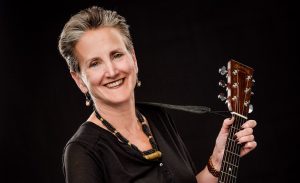This week, the 10th biennial Ashkenaz Festival in Toronto is in full swing, featuring more than 250 artists from over a dozen countries and highlighting the dynamic flourishing of Jewish culture around the world from Iraq to Germany to Israel to Argentina.
Artistic director Eric Stein asserts that Yiddish culture is the heart and the roots of the Ashkenaz Festival. His own career as a klezmer musician began while helping his filmmaker brother video-archive the 1997 festival. What previously seemed outmoded to Stein burst forth as innovative and energetic; he was inspired to create Jewish music himself.
He went from being a student at the annual KlezKanada retreat in Quebec (which concluded its 19th year last week) to teaching aspiring klezmer musicians there, to becoming the artistic director in 2006 of one of the largest festivals of its kind and the only one to shine such a prominent spotlight on Yiddish culture.
“Find me one other presenting arts organization presenting this much Yiddish content and impacting Yiddish culture so broadly,” Stein says.
 Indeed, the Ashkenaz Festival remains a standard-bearer globally for Yiddish culture, both in traditional and experimental forms, and a significant outlet for artists inspired by the world of Yiddish.
Indeed, the Ashkenaz Festival remains a standard-bearer globally for Yiddish culture, both in traditional and experimental forms, and a significant outlet for artists inspired by the world of Yiddish.
This week there will be Yiddish song for children, Klezmer dance parties, Yiddish film and theatre (with English subtitles) such as the one-man show from New York’s New Yiddish Rep, Yosl Rakover Speaks to God. Highlights include Forshpil from Germany and Russia with their mash-up of eastern European Jewish music and psychedelic rock; Alicia Svigals’ new score to accompany the 1918 silent Polish film The Yellow Ticket; the raucous folk opera Lilith, The Night Demon in One Lewd Act; and Yiddish-phile Shane Baker’s wacky vaudeville act, The Big Bupkis.
The idea for the Ashkenaz Festival formed in the early ’90s when musician and arts impresario David Buchbinder “realized that there was so much going on in the new Yiddish world that it would make an incredible festival.” Buchbinder observed that artists were moving their work “forward by connecting to the past in a way that was quite profound…People were finding amazing ways of bringing Yiddish and Yiddish culture into their contemporary work.”
Over the years, though, the festival branding morphed from being dubbed a “festival of new Yiddish culture” to the current tag line: “North America’s largest festival of global Jewish culture.” This shift is mirrored in the programming, which not only increasingly features the addition of Sephardi and Mizrachi influences but also eclectic cross-cultural collaborations such as the Jewish-Pakistani fusion of Sandaraa and the genre-defying blend of klezmer and Chinese music from violinist Steve Greenman and Gao Hong on the pipa, a traditional plucked Chinese string instrument.
Some may wonder why Yiddish continues to be featured as significantly as it does at the Ashkenaz Festival given the language’s dwindling daily usage, while diehard Yiddishists may bemoan the expanded offering, seemingly diluting the festival’s raison d’être.
Stein evokes a term coined by Jeffrey Shandler in Adventures in Yiddishland (2005): “postvernacular Yiddish”, referring to the current state of Yiddish – no longer a lingua franca of Jews, the language continues to inform cultural efflorescence in outposts of “Yiddishland” around the world.
Stein explains that the festival is “not about bringing Yiddish back as a language, but the survival and vitality of the language are intrinsically connected to the survival of the culture. The Yiddish culture movement is about all the aspects of culture that spins out of the linguistic context.”
Certainly while much Yiddish will be sung, spoken and heard at the Ashkenaz Festival this week, the focus is on creating a milieu that reaches back into a deeply rich cultural past, informing a Jewish present.
“I didn’t have a strong sense of myself as a Jew until I found klezmer music,” Stein shares, “It gave me a sense of history.”
The unique setting of the festival offers the possibility for deepening both connections to Jewish tradition and to many communities in multicultural Toronto. Ultimately, diversifying the programming is about diversifying audiences, which is very much in keeping with the original vision for Ashkenaz.
Buchbinder wanted to “create a festival that was of the Jewish community but was for the whole city,” asking: “How do we use this gift we have to open a conversation with wider Toronto in all its diversity?” Anticipating his Juno-winning Odessa/Havana project performance on Aug. 30, Buchbinder says that broadening the festival content beyond Yiddish is “essential and necessary.”
Czech-born, Toronto-based composer and musician Lenka Lichtenberg, a mainstay at the Ashkenaz Festival, exclaims: “It’s fantastic that it’s evolving in many new directions that will bring in new audiences in terms of Jewish culture.”
Still, she wanted to play a role in keeping Yiddish at the forefront of the festival and is launching the Yiddish Song Circle sing-along on Sept 1. Lichtenberg is also premiering her own Jewish fusion project: a collaboration with acclaimed Iraqi-Israeli musician Yair Dalal called Lullabies from Exile.
Indeed, the festival programing mirrors the evolution of Yiddish cultural expression itself over the last three decades. According to Stein, the Yiddish scene was “smaller and more focused in the ’80s and ’90s. There was more of a revivalist mentality. In the last decade, there is less of a sense that Yiddish culture might disappear,” which allows for the kind of adventurous experimentation we see today.
This weekend, Toronto’s Harbourfront will become a Yiddishland again, where past and present, traditional and contemporary, local and global juxtapositions mingle in a perfect mishmash – what a mechayeh!
A proud Yiddish speaker, Evelyn Tauben is an independent producer, curator and writer with a focus on contemporary Jewish arts and culture. www.evelyntauben.com






